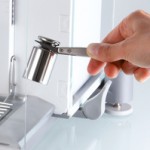
USP Chapter 41 Updates and Breakdown
USP Chapter 41 has updated their testing requirements to determine the suitability of balances. Here is a quick reference on the important aspects and updates: Chapter 41 is a REQUIREMENT for QC analysis measurements. There are two required tests in Chapter 41, Accuracy and Repeatability. Both tests have tolerances of 0.10%. The Accuracy requirement is […]
The Impact of OOT Calibration Weights
In the pharmaceutical industry there has always been a great concern on the impact of out of tolerance calibration weights (OOT’s). “As Found” OOT weight calibration results have always set off alarms and initiated investigations in the industry, not just for calibration weights but for all instruments. In regards to calibration weights used specifically for […]
Calibration Weight Frequencies
There are no published standards or requirements in regards to weight calibration frequencies for your “precision” calibration weights. “Precision” would be defined as any calibration weights having the following, or equivalent, Accuracy Classes; ASTM Class 0, ASTM Class 1, ASTM Class 2, ASTM Class 3, and ASTM Class 4. Calibration weight manufacturers will recommend one […]
Understanding the Weight Traceable Certificate
Our Weight Traceable Certificate is a NIST Traceable report documenting weight calibration results. The Weight Traceable Certificate documents the testing environmental data (Temperature, Pressure, Relative Humidity and the Air Density) taken at the time of the weight calibration. The air density is used to apply and adjust for the required air buoyancy corrections for the […]
Calibration Weight Usage – Getting Good Measurements
In addition to having your balances calibrated at the appropriate intervals (externally or internally), to really get the most value out of your calibration weight measurements in your daily checks it is good practice to apply the following steps to maximize the precision and accuracy of your measurement results. Before taking the calibration weight measurements, […]
Weight Calibration Providers
With quality awareness at an all-time high, traceability, accuracy, and the respective documentation are a must for all weighing and measuring equipment, balance calibration weights included. NIST traceable weight calibrations have become more than just sufficing regulatory and customer audits. Whether it is for internal balance weight verifications or balance calibration, having the needed traceability […]
Calibration Weight Care
When using laboratory balance calibration weights, also referred to as mass standards, for laboratory or calibration applications, the proper care, handling, and usage are extremely critical in maintaining the traceability and accuracy of the weights. It is essential that the weight maintain its accuracy, especially if they are ASTM Class 0, ASTM Class 1, Ultra […]
Weight Checks for Laboratory Balances
The first thing that needs to be determined is what calibration weights are needed. This entails choosing the calibration weight class, weight range, and weight test points. Ideally, a weight should be more accurate than the weighing (test) instrument, though this is not always possible. Whenever possible, the calibration weight range should bracket the user […]
Figuring out the Accuracy Classes
This is a quick guide and background on weight accuracy classifications for your balance calibration weight (i.e. mass standards) to ensure traceable and accurate weighing measurement & calibrations. When choosing balance calibration weights for your weighing and measurement application, the first thing that needs to be addressed is what accuracy class will be needed. Accuracy […]




